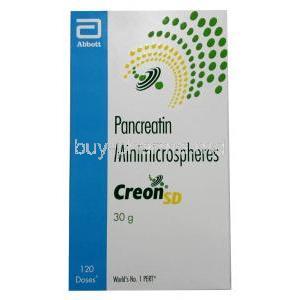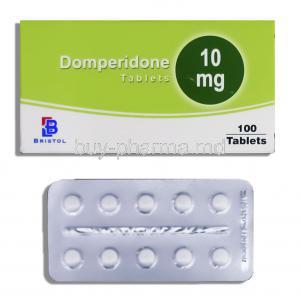Pancrelipase
- I. Introduction to Pancrelipase
- II. Composition of Pancrelipase
- III. How Pancrelipase Works
- IV. Primary Uses of Pancrelipase
- V. Pancrelipase in Off-Label Uses
- VI. Common Side Effects of Pancrelipase
- VII. Detailed Analysis of Pancrelipase Side Effects
- VIII. Dosage and Administration of Pancrelipase
- IX. Interactions with Other Medications
- X. Storage and Handling of Pancrelipase
- XI. Warnings and Contraindications
- XII. Pancrelipase: Special Administration Considerations
- XIII. Overdosage of Pancrelipase
- XIV. Handling Precautions for Pancrelipase
I. Introduction to Pancrelipase
A. Definition and Overview
Pancrelipase, a medication, is a combination of digestive enzymes. It is primarily designed to replace the enzymes in people with exocrine insufficiency (EPI), a condition characterized by insufficient production of natural enzymes in the pancreas. This medicine plays a role in restoring regular digestive functions.
B. Historical Development and Approval Status
With a lineage that can be traced back to the 1900s, pancrelipase has undergone thorough clinical evaluations and regulatory scrutiny. Its transformation from an enzyme supplement to a fully approved medication by the FDA represents significant progress in gastroenterological treatments. It serves as evidence of the advancements in managing digestive health disorders.
II. Composition of Pancrelipase
A. Active Ingredients Breakdown
Lipase is an enzyme that helps break down fats into fatty acids and glycerol. Protease plays a role in breaking down proteins into amino acids. Amylase assists in the digestion of carbohydrates by converting starches into sugars.
B. Excipients and Formulation Variants
The effectiveness of Pancrelipase is enhanced by a variety of ingredients that are specifically formulated to improve the stability of enzymes and aid in the absorption process within the intestines. Different formulations are available, including delayed-release capsules and enteric-coated granules, which provide solutions for patients, ensuring a customized therapeutic approach.
III. How Pancrelipase Works
A. Mechanism of Action
Pancrelipase works wonders by imitating the pancreas's natural digestive enzymes. When given, it diligently breaks down fats, proteins, and carbohydrates, making the digestive process more efficient and improving the absorption of nutrients.
B. Biological Impact on the Digestive System
The impact it has on the system is incredibly significant. Adding to the body's natural enzyme production it not only helps with problems related to poor nutrient absorption but also dramatically enhances the overall digestive well-being of individuals.
IV. Primary Uses of Pancrelipase
A. Approved Indications and Therapeutic Roles
Pancrelipase is a medication that covers a range of conditions, including pancreatitis, cystic fibrosis, and post-pancrectomy. It is used to alleviate symptoms of malabsorption and improve the quality of life for patients 1.
Here is the reference for the above content:
1: DrugBank Online. (n.d.). Pancrelipase: Uses, Interactions, Mechanism of Action. https://go.drugbank.com/drugs/DB00085.
B. Managing Pancreatic Insufficiency
Pancrelipase plays a role in managing exocrine pancreatic insufficiency because it helps compensate for the lack of enzyme production. It helps normalize the processes, which in turn helps alleviate the nutritional deficiencies commonly seen in EPI patients.
V. Pancrelipase in Off-Label Uses
A. Emerging Therapeutic Applications
Pancrelipase is a medication that covers a range of conditions, including pancreatitis, cystic fibrosis, and post-pancrectomy. It is used to alleviate malabsorption symptoms and improve patient quality of life 1.
Here is the reference for the above content:
1: DrugBank Online. (n.d.). Pancrelipase: Uses, Interactions, Mechanism of Action. https://go.drugbank.com/drugs/DB00085.
B. Efficacy and Research Insights
Recent studies have explored the effectiveness of pancrelipase in off-label applications, revealing findings that highlight its potential to improve the well-being of patients with digestive disorders, broadening its range of therapeutic benefits 123.
Here are the references for the above content:
1: DrugBank Online. (n.d.). Pancrelipase: Uses, Interactions, Mechanism of Action. https://go.drugbank.com/drugs/DB00085. 2: Drugs.com. (2021). Pancrelipase Uses, Side Effects & Warnings. https://www.drugs.com/mtm/pancrelipase.html. 3: Wikipedia. (2021). Pancreatic enzymes (medication). https://en.wikipedia.org/wiki/Pancreatic_enzymes_(medication).
VI. Common Side Effects of Pancrelipase
A. Overview of Frequent Adverse Effects
Although pancrelipase is generally well tolerated, it can still cause some side effects. Reported adverse reactions include gastrointestinal symptoms such as stomach pain, feelings of nausea, and diarrhea. However, it's important to note that these effects are usually mild and temporary .
.
B. Managing and Mitigating Side Effects
Managing these side effects effectively requires adjusting the dosage and closely monitoring the situation. In instances, it is possible to alleviate side effects by customizing the dose to match an individual's digestive tolerance thereby ensuring both effectiveness and comfort.
VII. Detailed Analysis of Pancrelipase Side Effects
A. Gastrointestinal Manifestations
The gastrointestinal system is where most of the side effects of pancrelipase occur. These effects can range from feeling bloated to experiencing constipation. To effectively manage these symptoms while still ensuring the treatment works, it is essential for doctors to consider the approach carefully.
B. Systemic Reactions and Rare Complications
Although uncommon, systemic reactions, like hypersensitivity and severe gastrointestinal complications, may occur. In some cases, it is crucial to seek immediate medical attention and undergo a comprehensive evaluation to ensure the safety of the patient and the effectiveness of ongoing treatment.
VIII. Dosage and Administration of Pancrelipase
A. Dosage Guidelines Across Different Conditions
The amount of pancrelipase needed depends on how severe the enzyme deficiency is in the particular condition being treated. When dealing with pancreatitis, doses are usually higher than those for cystic fibrosis. It is crucial to adjust the dosage to meet requirements, which often involves making gradual changes based on how well the treatment works and how well the digestive system tolerates it.
B. Administration Techniques and Best Practices
To get the most out of Pancrelipase, take it with meals. Remember to swallow the capsules without crushing or chewing them, which helps avoid releasing the enzymes too soon. If you find it difficult to swallow pills, sprinkle the contents on acidic foods, like applesauce, and immediately eat it without chewing.
IX. Interactions with Other Medications
A. Common Drug Interactions
Antacids and medications known as proton pump inhibitors have the potential to impact how well pancrelipase works. When pancrelipase is taken alongside diabetes drugs, it is essential to monitor blood sugar levels because pancrelipase could influence them.
B. Impact on Absorption and Efficacy
How other medications interact with pancrelipase can impact how well it gets absorbed and works. These interactions can. Make it less effective or make side effects worse. That's why it's essential to watch and maybe adjust the dose when giving pancrelipase with other drugs.
X. Storage and Handling of Pancrelipase
A. Optimal Storage Conditions
Pancrelipase should be kept at room temperature, away from moisture and heat. The enzymes can lose their effectiveness when exposed to temperatures. It is advisable to store the medication in its container, ensuring that it is tightly closed to maintain its quality.
B. Shelf Life and Expiry Considerations
It is crucial for the effectiveness of pancrelipase that its shelf life is considered. Patients should diligently check the expiration date and refrain from using the medication after it has expired. Any unused or unused drug should be disposed of properly following pharmacy guidelines or local regulations for disposal.
XI. Warnings and Contraindications
A. Precautionary Measures for Specific Conditions
It is essential to exercise caution when using Pancrelipase in patients who have known allergies to pork proteins, as the enzymes used in this medication are commonly sourced from pigs. Moreover, individuals with gout, renal problems, or high uric acid levels should be closely monitored due to the possibility of an increase in blood acid levels.
B. Absolute Contraindications
Absolute contraindications for pancrelipase include having an allergic reaction to any of its ingredients and experiencing acute pancreatitis. In these situations, it is advisable to explore alternative treatment options to prevent adverse effects.
XII. Pancrelipase: Special Administration Considerations
A. Elderly Patients: Adjustments and Monitoring
Caution should be exercised when administering pancrelipase to patients. Dosage adjustments may be necessary. It is essential to closely monitor the balance between effectiveness and potential side effects, especially in cases where concomitant diseases and multiple medications are being taken.
B. Pregnant Women and Nursing Mothers: Safety Profile
Although there is currently no evidence linking the use of pancrelipase to any adverse effects during pregnancy and breastfeeding, it is advisable only to utilize it when necessary. One must carefully consider the advantages. Weigh them against any potential risks that could impact the well-being of the unborn child and the infant.
C. Pediatric Use: Dosage and Precautions
In the case of children, infants, and young ones, it's essential to adjust the pancrelipase dosages with caution. Keeping an eye on their weight gain and nutritional well-being is vital to ensure that the dosing is effective without putting too much strain on their developing digestive systems.
XIII. Overdosage of Pancrelipase
A. Symptoms and Immediate Actions
Taking a dose of pancrelipase may result in specific symptoms like hyperuricosuria and hyperuricemia. It is crucial to seek medical attention in case of an overdose, and the primary approach to managing it involves providing symptomatic and supportive care.

B. Long-term Management of Overdosage
Regular monitoring of acid levels and renal function tests may be necessary for ongoing management. To prevent the recurrence of symptoms caused by an overdose, it is advisable to adjust the dosage of pancrelipase to the adequate amount.
XIV. Handling Precautions for Pancrelipase
A. Safe Handling Procedures
Patients and caregivers must handle pancrelipase cautiously, ensuring they do not inhale or come into contact with the medication on their skin or mucous membranes to avoid any potential irritation. It is advisable to wash hands after handling the drug.
B. Disposal and Environmental Concerns
It is essential to handle the disposal of pancrelipase in a manner. Please refrain from disposing of expired medication by flushing it down the toilet or throwing it in the regular trash. Instead, I recommend consulting with your pharmacist or contacting your waste disposal company for guidance on safe and environmentally friendly disposal methods.






















